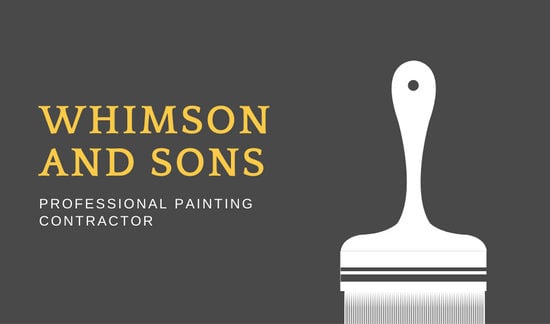Figure Out How Seasonal Elements Influence Business Outside Painting Success And Find The Best Times To Ensure Long-Term Results For Your Task
Figure Out How Seasonal Elements Influence Business Outside Painting Success And Find The Best Times To Ensure Long-Term Results For Your Task
Blog Article
Web Content By-Fox Rosendal
When you're planning a commercial outside painting job, seasonal elements can make or break your results. You'll want to think about just how temperature level and humidity influence paint application and drying out times. Selecting the ideal season can guarantee your paint adheres correctly and lasts longer. However which periods are truly the best for this kind of work? Let's explore the crucial elements that can affect your job's success.
The Impact of Temperature Level on Paint Application
When you're intending a commercial outside painting task, the temperature can substantially impact exactly how well the paint adheres and dries out.
Preferably, you wish to repaint when temperatures vary in between 50 ° F and 85 ° F. If it's too cool, the paint might not treat correctly, causing problems like peeling or splitting.
On the flip side, if it's as well warm, the paint can dry out too rapidly, avoiding correct attachment and causing an uneven finish.
You need to also consider the time of day; morning or late afternoon uses cooler temperatures, which can be more favorable.
Constantly inspect browse this site for the particular paint you're making use of, as they commonly provide guidance on the optimal temperature level range for optimal outcomes.
Moisture and Its Effect on Drying Times
Temperature level isn't the only environmental element that influences your business outside paint job; humidity plays a substantial duty also. High moisture degrees can slow down drying out times dramatically, influencing the total quality of your paint job.
When the air is filled with moisture, the paint takes longer to treat, which can lead to concerns like poor adhesion and a higher threat of mold development. If you're repainting on a particularly damp day, be gotten ready for extensive wait times between layers.
It's important to keep an eye on regional climate condition and plan as necessary. Preferably, aim for humidity degrees between 40% and 70% for ideal drying.
Maintaining these factors in mind ensures your project stays on track and delivers a long-term surface.
Best Seasons for Commercial Exterior Painting Projects
What's the most effective season for your business external paint jobs?
Spring and early fall are normally your best choices. Throughout these periods, temperature levels are moderate, and moisture degrees are typically lower, developing excellent conditions for paint application and drying.
Stay clear of summer's intense heat, which can cause paint to completely dry also quickly, leading to inadequate bond and surface. Likewise, winter's cold temperature levels can impede appropriate drying and treating, risking the durability of your paint job.
Go for days with temperatures between 50 ° F and 85 ° F for optimum results. Keep in mind to examine the neighborhood weather report for rain, as wet problems can spoil your job.
Preparation around these variables ensures your paint project runs efficiently and lasts much longer.
Verdict
In conclusion, intending your business exterior paint projects around seasonal considerations can make a substantial distinction in the outcome. By organizing do painting contractors make good money throughout the optimal temperature levels and humidity levels, you'll ensure much better attachment and drying out times. Bear in mind to watch on neighborhood weather forecasts and pick the right time of year-- springtime and early loss are your best options. Taking these steps will assist you achieve a durable and expert coating that lasts.
